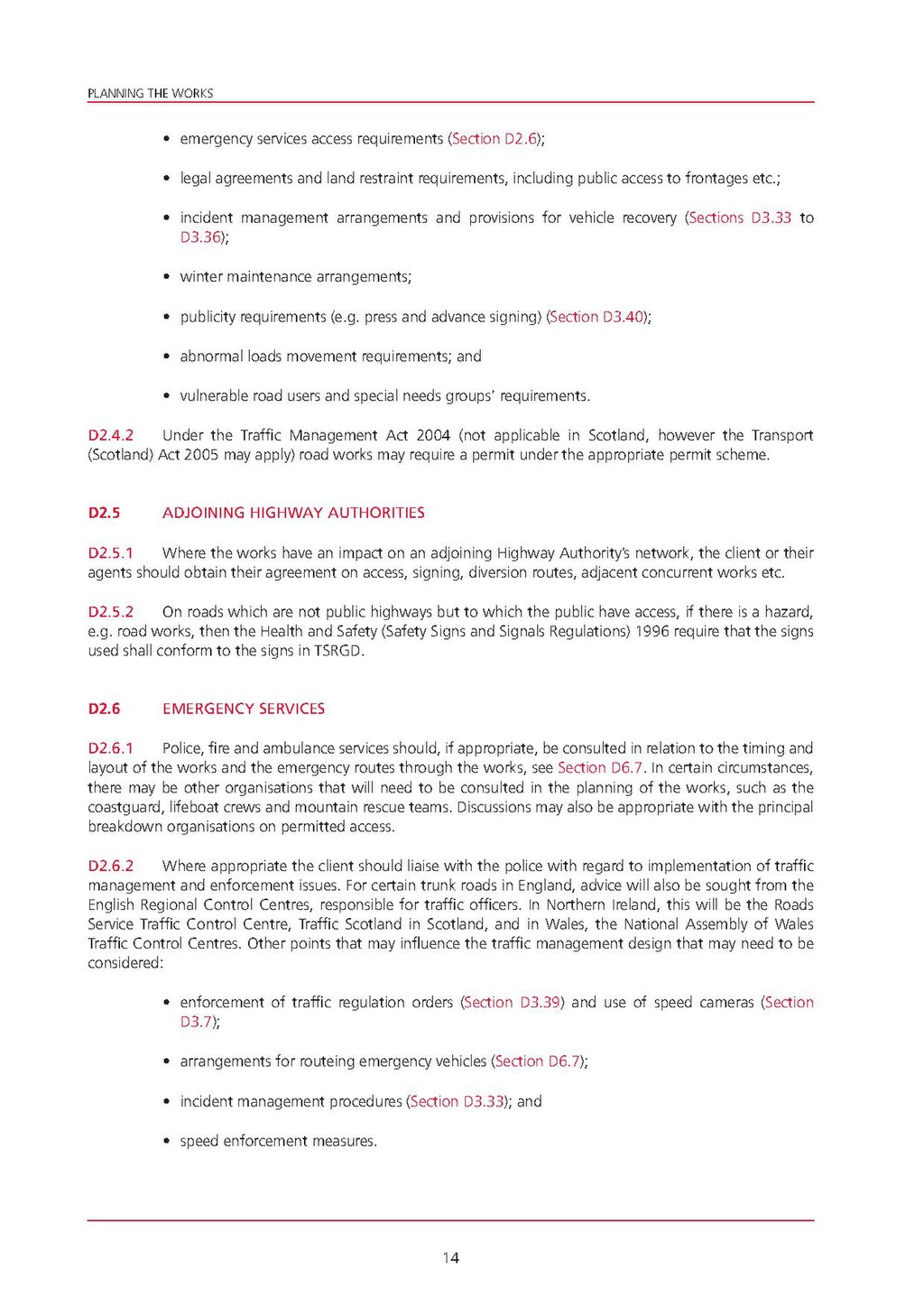- emergency services access requirements (Section D2.6);
- legal agreements and land restraint requirements, including public access to frontages etc.;
- incident management arrangements and provisions for vehicle recovery (Sections D3.33 to D3.36);
- winter maintenance arrangements;
- publicity requirements (e.g. press and advance signing) (Section D3.40);
- abnormal loads movement requirements; and
- vulnerable road users and special needs groups’ requirements.
D2.4.2
Under the Traffic Management Act 2004 (not applicable in Scotland, however the Transport (Scotland) Act 2005 may apply) road works may require a permit under the appropriate permit scheme.
D2.5ADJOINING HIGHWAY AUTHORITIES
D2.5.1 Where the works have an impact on an adjoining Highway Authority’s network, the client or their agents should obtain their agreement on access, signing, diversion routes, adjacent concurrent works etc.
D2.5.2 On roads which are not public highways but to which the public have access, if there is a hazard, e.g. road works, then the Health and Safety (Safety Signs and Signals Regulations) 1996 require that the signs used shall conform to the signs in TSRGD.
D2.6EMERGENCY SERVICES
D2.6.1 Police, fire and ambulance services should, if appropriate, be consulted in relation to the timing and layout of the works and the emergency routes through the works, see Section D6.7. In certain circumstances, there may be other organisations that will need to be consulted in the planning of the works, such as the coastguard, lifeboat crews and mountain rescue teams. Discussions may also be appropriate with the principal breakdown organisations on permitted access.
D2.6.2 Where appropriate the client should liaise with the police with regard to implementation of traffic management and enforcement issues. For certain trunk roads in England, advice will also be sought from the English Regional Control Centres, responsible for traffic officers. In Northern Ireland, this will be the Roads Service Traffic Control Centre, Traffic Scotland in Scotland, and in Wales, the National Assembly of Wales Traffic Control Centres. Other points that may influence the traffic management design that may need to be considered:
- enforcement of traffic regulation orders (Section D3.39) and use of speed cameras (Section D3.7);
- arrangements for routeing emergency vehicles (Section D6.7);
- incident management procedures (Section D3.33); and
- speed enforcement measures.
14
